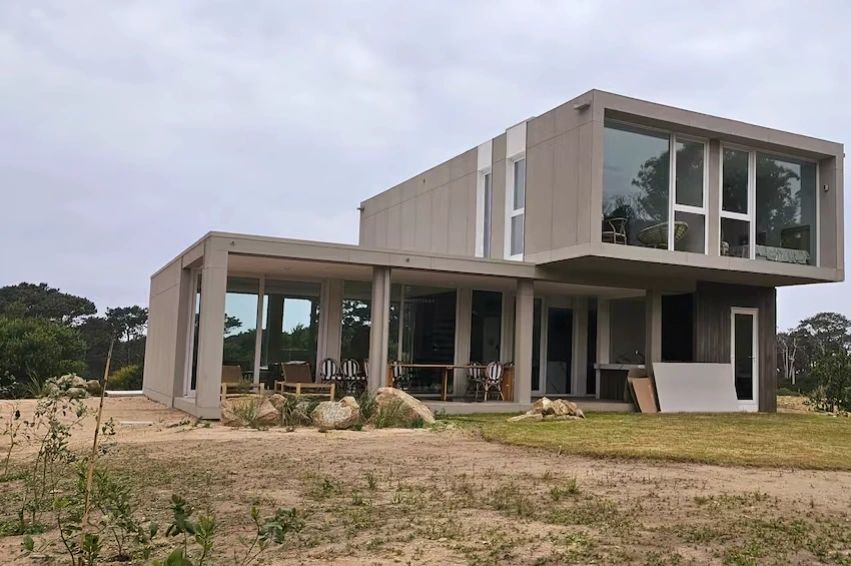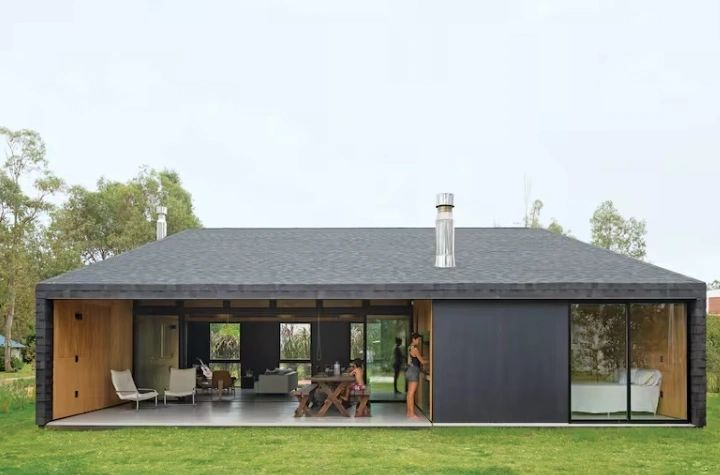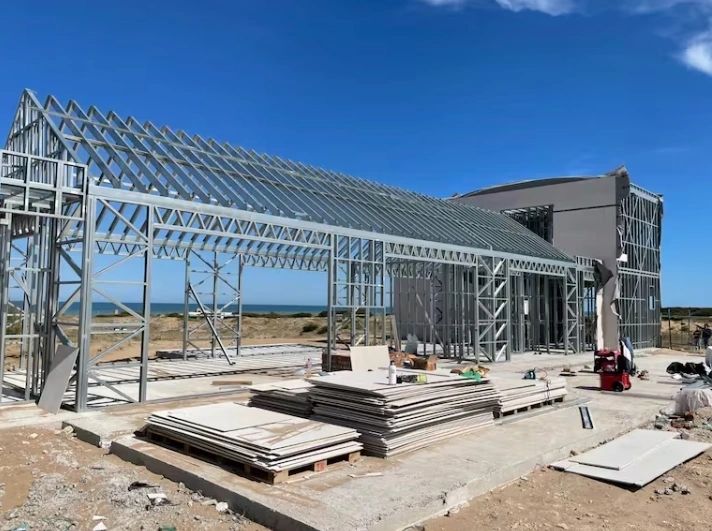BuySellBA
Administrator
What is the price per square meter of drywall construction in October 2025? - La Nacion Propiedades

Source:

 www.lanacion.com.ar
www.lanacion.com.ar
October 14, 2025
Faced with the rising cost of construction, alternatives to the traditional method of building a house are emerging that should be explored and considered.

Dry constructions have the advantage of reducing execution times and also laborIcon +
Property prices continue to rise, and many are wondering about the prices of different types of construction , whether to consider buying a finished property or starting a new one. At a time when construction costs remain high (accumulating a 98% increase since October 2023, according to Zonaprop), the question arises as to the best way to own a property at an affordable price.

Dry-built houses are built faster than those using traditional construction systems.Javier Agustín Rojas
In this scenario, dry construction appears on the scene. But it's worth asking, what does this construction system consist of ? It's a technique that avoids the use of water and certain materials during construction; in other words, it eliminates the need for wet mixes to secure the building's components. In these cases, the materials are glued, nailed, or embedded into a structure without having to wait for drying time. This accelerates the process and reduces construction times.
In addition, according to Federico Azzollini, managing partner of Icon+, they have other advantages, including the following:

Dry construction is a technique that avoids using water when building.Icon +
And the answer is yes. “Dry construction is between 12% and 15% cheaper than traditional construction. And you have to consider all the advantages it offers,” explains Azzollini.
Thus, if building a square meter of good quality costs around US$1,600 + VAT for traditional construction - according to sources consulted by LA NACION - a square meter with this system would cost around US$1,340, considering that the monthly increase in September was 1.7%.
Azzollini points out that, since this system involves less labor than traditional construction, costs are lower. That is, since labor with this system accounts for between 30% and 40% of costs and materials the remaining 60%, in a context where "material costs should begin to fall with the opening of imports and where labor is projected to increase from now on, this system becomes more attractive," explains Azzollini. On the other hand, in traditional construction, costs are 50% and 50%.
www.buysellba.com

Source:

¿Cuál es el precio por metro cuadrado de una construcción en seco en octubre 2025?
Frente al aumento del costo de construcción, surgen alternativas al método tradicional para construir una casa que deben explorarse y considerarse
October 14, 2025
Faced with the rising cost of construction, alternatives to the traditional method of building a house are emerging that should be explored and considered.

Dry constructions have the advantage of reducing execution times and also laborIcon +
Property prices continue to rise, and many are wondering about the prices of different types of construction , whether to consider buying a finished property or starting a new one. At a time when construction costs remain high (accumulating a 98% increase since October 2023, according to Zonaprop), the question arises as to the best way to own a property at an affordable price.

Dry-built houses are built faster than those using traditional construction systems.Javier Agustín Rojas
In this scenario, dry construction appears on the scene. But it's worth asking, what does this construction system consist of ? It's a technique that avoids the use of water and certain materials during construction; in other words, it eliminates the need for wet mixes to secure the building's components. In these cases, the materials are glued, nailed, or embedded into a structure without having to wait for drying time. This accelerates the process and reduces construction times.
In addition, according to Federico Azzollini, managing partner of Icon+, they have other advantages, including the following:
- They're faster to complete: depending on the project, they typically take at least 25% to 40% less time than traditional construction . Since they don't use wet materials, there's no need to wait for them to dry.
- It's sustainable : it's faster to build and has a lower environmental impact. Plus, it can be made with almost all recyclable materials and is custom-made, which prevents waste.
- Cost predictability : Because construction is faster, inflation has a lesser impact. This makes it less risky for the investor who provides the money.
- Better use of space: The thickness of the envelope of a dry-build construction is thinner than that of a traditional one, although the structural strength, thermal, acoustic, and fire insulation are the same. This means that, with the same buildable area, you have more usable square meters and larger rooms, because the wall thickness is thinner (in a dry-build construction, it's 14/15 cm, while in traditional construction, it's between 35 and 45 cm).
- Longer lasting : These are constructions that, if done well technically, can last a long time.
- Less humidity: A problem that often complicates traditional construction is moisture in the foundation, which then rises to other areas of the house. With this system, the buildup of moisture in these areas is prevented, thus reducing humidity inside the home.

Dry construction is a technique that avoids using water when building.Icon +
The cost per square meter of a dry construction
Now, it's worth asking what the costs are of using this type of construction to build properties and whether they are cheaper than what is commonly called "traditional construction" (brick and mortar masonry or the use of concrete).And the answer is yes. “Dry construction is between 12% and 15% cheaper than traditional construction. And you have to consider all the advantages it offers,” explains Azzollini.
Thus, if building a square meter of good quality costs around US$1,600 + VAT for traditional construction - according to sources consulted by LA NACION - a square meter with this system would cost around US$1,340, considering that the monthly increase in September was 1.7%.
Azzollini points out that, since this system involves less labor than traditional construction, costs are lower. That is, since labor with this system accounts for between 30% and 40% of costs and materials the remaining 60%, in a context where "material costs should begin to fall with the opening of imports and where labor is projected to increase from now on, this system becomes more attractive," explains Azzollini. On the other hand, in traditional construction, costs are 50% and 50%.
www.buysellba.com

